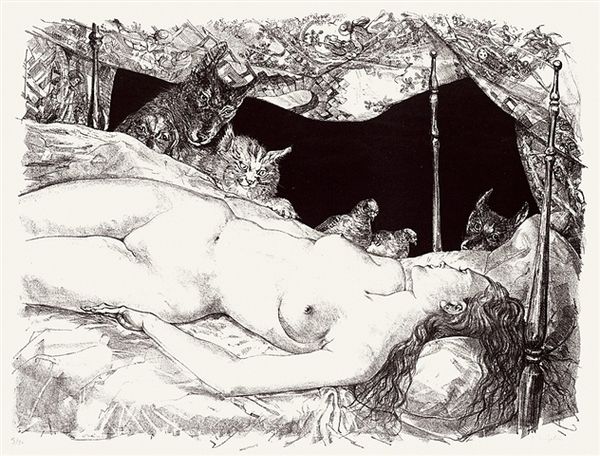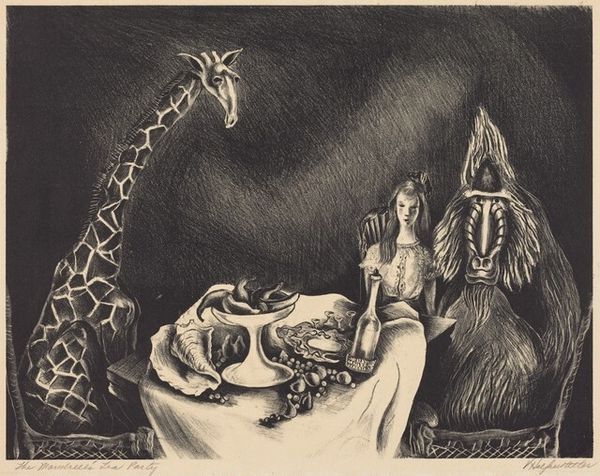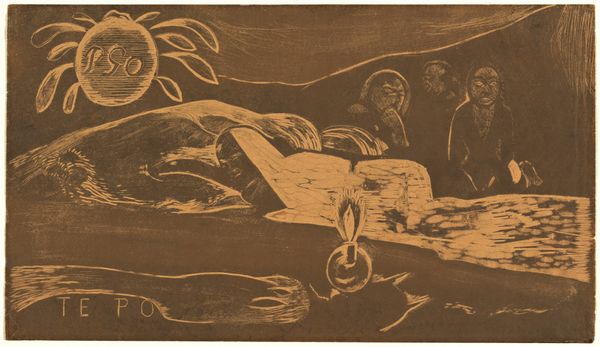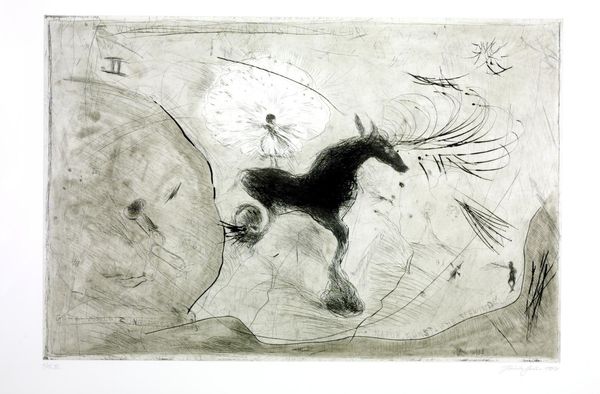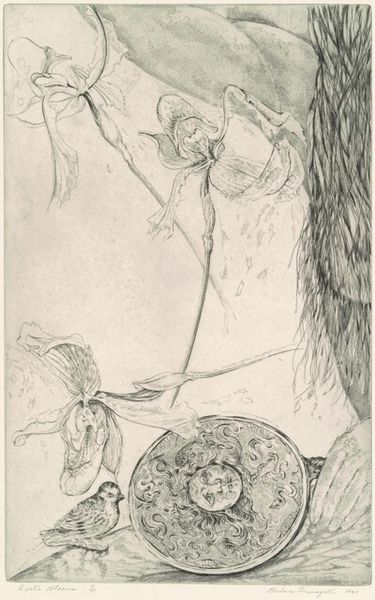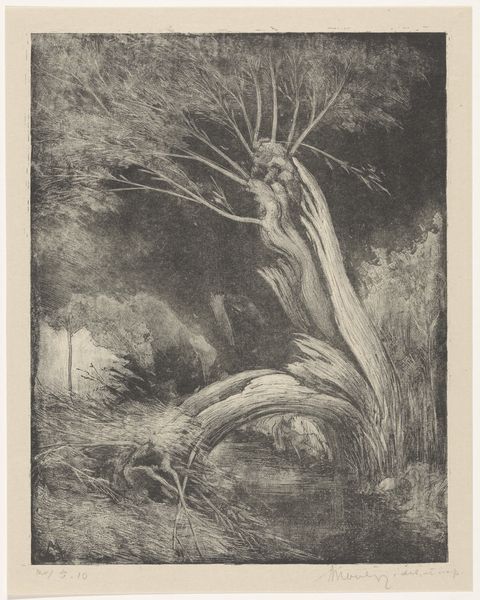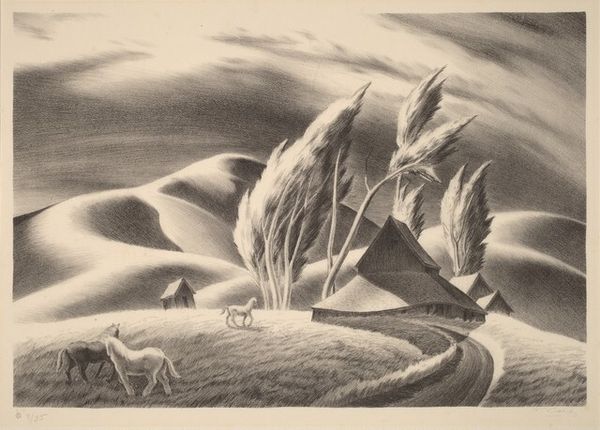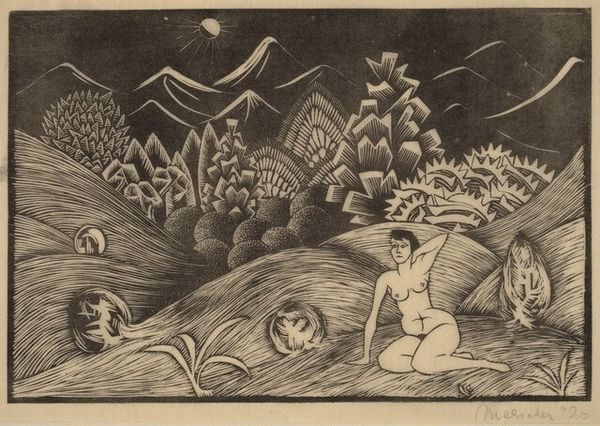
drawing, print, pencil
#
portrait
#
drawing
# print
#
landscape
#
caricature
#
pencil drawing
#
pencil
#
surrealism
#
portrait drawing
#
history-painting
#
realism
Dimensions: Image: 334 x 394 mm Block: 405 x 485 mm
Copyright: National Gallery of Art: CC0 1.0
Curator: Jack Barber’s pencil drawing, “Strays,” composed sometime between 1938 and 1940, offers a rather bleak snapshot of rural life. The high contrast evokes a feeling of isolation. What’s your first impression? Editor: Isolation is spot on! I immediately feel a heavy, almost suffocating mood. The barren landscape and the stark moonlight... it's like a visual representation of loneliness. It's as if you're staring at some scene from a very quiet, end-of-days moment. Curator: Indeed. There's an interesting push and pull in how Barber chooses to represent this period of the American West. The Realist style combined with such emotive subject matter reveals a great deal of sentiment in the work, a sentiment born in a challenging moment of hardship. Editor: Right. I imagine the artist trying to make sense of nature's and man's ability to survive the most brutal conditions. There is also something subtly disquieting in the figures of the calf and mother cow; they stand in sharp contrast to the tall cowboy, giving them a subtle appearance of the surreal. It almost seems he intentionally evokes a feeling of detachment. Curator: That contrast likely speaks to Barber's feelings around that same economic hardship; the Dust Bowl era hit many rural families hard and this sort of composition reflects a certain melancholy and desperation common to its victims. Barber really forces us to confront the consequences of systemic neglect and environmental disaster. Editor: Absolutely. Even that stark, almost caricatured figure on horseback could be read as the very thing driving the herd off the dunes. All in all, though the drawing style of the work has traditional roots, it communicates something truly beyond just its surface level. Curator: Well, I appreciate how you've touched on both the historical and personal aspects of the piece. Hopefully, our visitors feel inclined to look a little closer at art, and through works like this better understand their own relationship to history. Editor: Agreed. It is vital for art to keep asking difficult questions. Even a stark depiction of isolation, as seen in 'Strays' has much to teach us about our connections to others, as well as how the past always holds its secrets for those looking for clues.
Comments
No comments
Be the first to comment and join the conversation on the ultimate creative platform.
